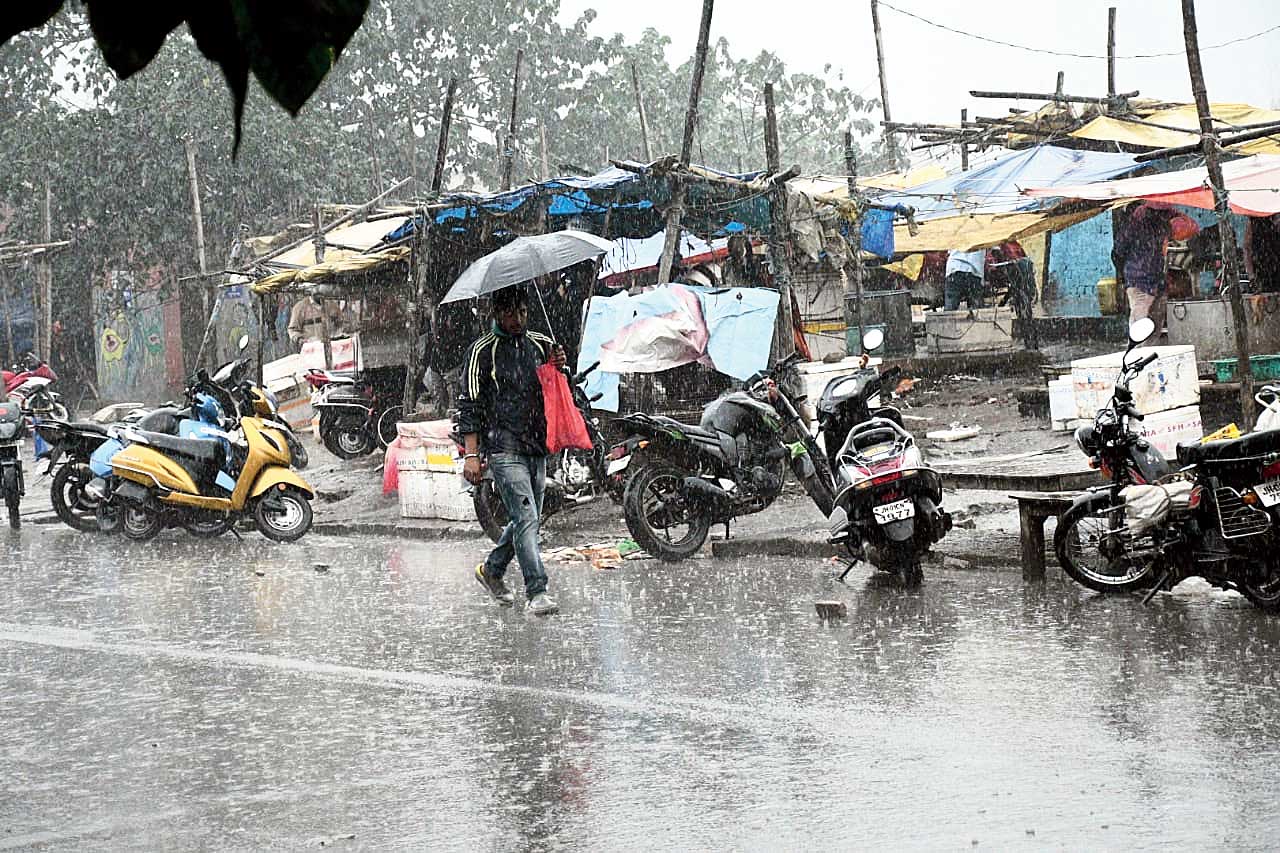The rain god has been generous with Jharkhand in March, the first pre-monsoon month, which saw record rain because of the impact of frequent western disturbances.
Statistics of the Met department suggest that Daltonganj, the Palamau headquarters, topped the state with the local IMD observatory recording 120.9mm of rain till Tuesday.
This is a record of sorts in the recent few years. Steel city Jamshedpur was placed in the second spot with 110.1mm rainfall recorded till the last day of March. Ranchi, too, notched a record rainfall of 91.3mm in March.
Met records reveal Chaibasa in neighbouring West Singhbhum district recorded 86.1mm, while Bokaro and Ramgarh recorded close to 80mm of rain. Data suggest Ranchi recorded a rainfall between 15mm and 25mm in the last five years in March.
Met records of the last five years say that never before since 2015 did the steel city record such a good spell of rain in March. Data suggest Jamshedpur had recorded a rainfall between 20mm and 30mm in March in the last five years. Ranchi, too, this year recorded an impressive rainfall.
The rain god was also benevolent in Palamau and several other districts in north-west Jharkhand. In 2017, Daltonganj had recorded March’s highest rain of 24mm. Last year, it recorded a paltry 18mm of rain. Several other places across the state, including Garhwa and Hazaribagh, witnessed a record rainfall of over 50mm in March this year.
For the state, the average rainfall during March 1 and 31 was around 48mm against a normal of 10mm, which was much above normal of long period average. Data suggest that of the 24 districts, 18 received excess rainfall in March.
“The bounty in March this year in southern, central and north-western parts of the state was because of frequent western disturbances passing through northern parts and formation of associated cyclonic circulation and low pressure trough over Jharkhand and neighbouring states,” said S.D. Kotal, the director of Ranchi Meteorological Centre.










